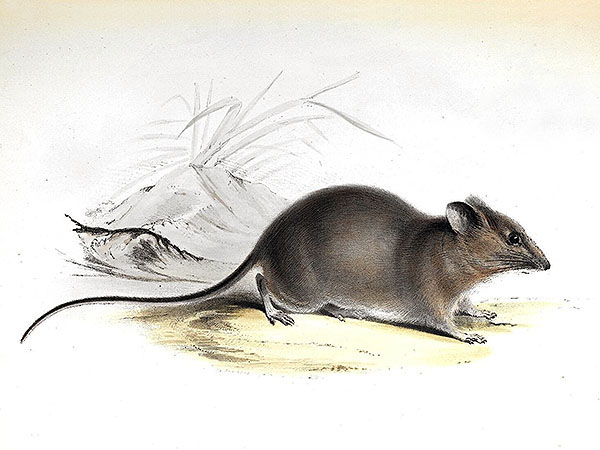Large Ground Finch (Geospiza magnirostris ssp. magnirostris)
The Large Ground Finch was described in 1837 based on material that was collected by Charles Darwin on the Galápagos Islands.
The species reaches a size of about 16 cm; the males are mostly blackish brown while the females are speckled dark – and light brown.
Today this species can be found on all the main islands within the archipelago, except for Darwin, Española, and San Cristóbal, where it is thought to have become extinct.
***
When Charles Darwin visited the Galápagos Islands in 1835, he collected several specimens on several of the islands; his specimens, however, don’t always bear reliable labels, and in some cases, he seems to have forgotten on which island he had collected which specimen.
“Indeed, Darwin’s typespecimens have provided a considerable nightmare of taxonomic problems for subsequent ornithologists, based largely on their controversial localities. Darwin claimed, for example, that specimens of a peculiar large-beaked form of Geospiza magnirostris came from Chatham [Isla Floreana] and Charles islands [Isla San Cristóbal]. But after more than a century of subsequent collecting without finding any such large-billed specimens, ornithologists found themselves faced with a puzzle. Either this form had become extinct on Chatham and Charles islands, where no magnirostris specimens (large or small) had ever been found by other expeditions; or else Darwin’s specimens must have come from islands other than those indicated.” [1]
***
This very large-billed Large Ground Finch is often treated as some kind of nominate form of the species but may in fact be nothing but a just large-billed population that is now gone for whatever reasons.
*********************
References:
[1] Frank J. Sulloway: The Beagle collections of Darwin’s finches (Geospizinae).- Bulletin of the British Museum of Natural History (Zoology) 43: 49-94. 1982
*********************

(public domain)
*********************
edited: 31.05.2021


